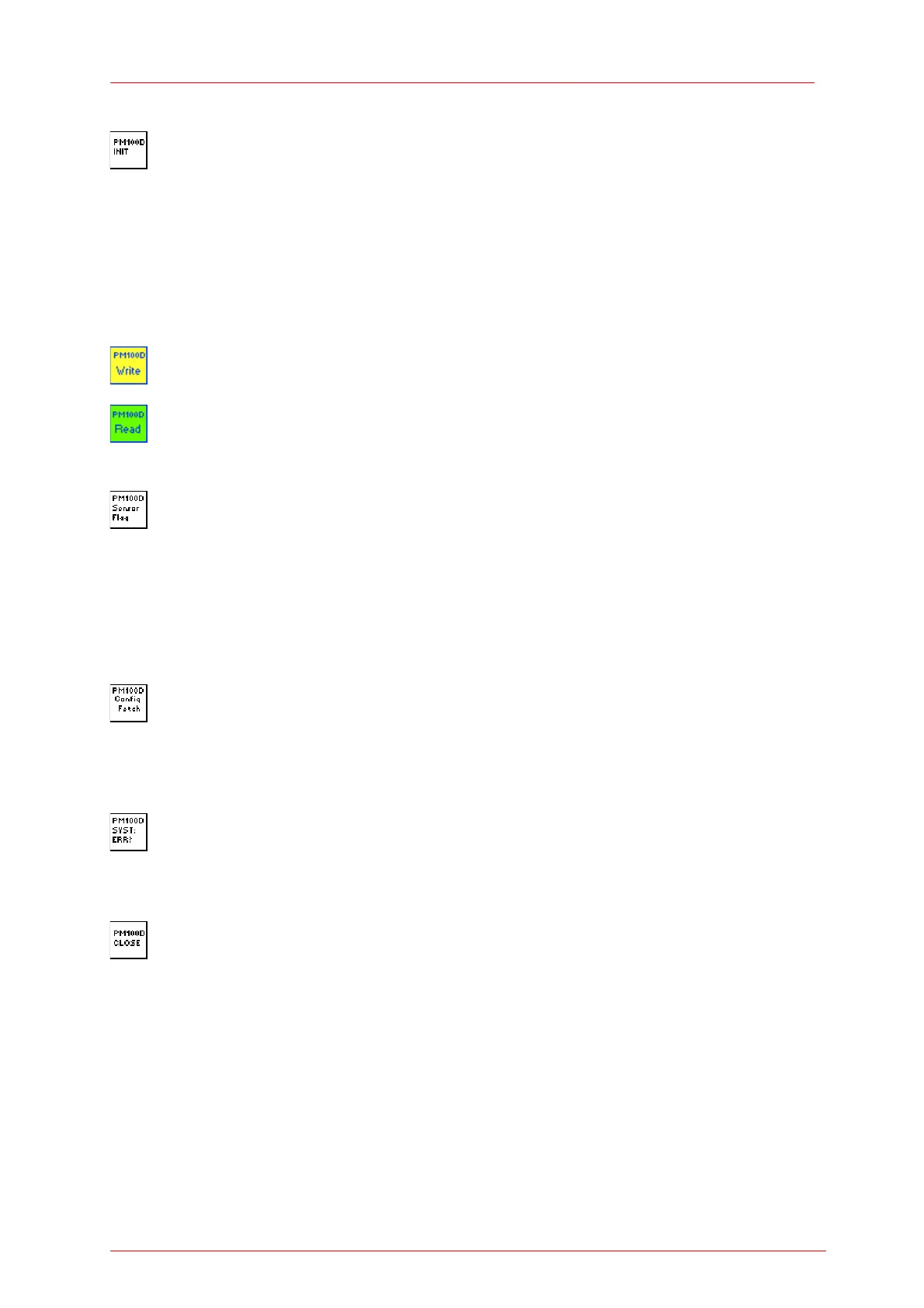6.4 PM100D SCPI Commands
PM100D_Initialize.vi
This VI scans for connected devices, that can be selected in a dialog box.
Next steps
- setting timeout
- performing identification query
- configuring the operation register to '512'; flag gets to HI when a new
measurement
value is ready to fetch
- clear operation register
PM100D_Write.vi
Writes a SCPI command to the connected instrument
PM100D_Read.vi
Reads data from the connected instrument. All query commands
according the SCPI command table are terminated by a question mark (?)
PM100D_SensorFlag.vi
This VI queries all relevant sensor info with SYST:SENS:IDN?
- sensor name
- sensor serial number
- calibration message
- sensor type
- sensor sub-type
- sensor flags
PM100D_ConfMeas.vi
- CONFigure measurement; CONF:<parameter> (POW, ENER, etc.)
- ABORt measurement
- Clear operation register with STAT:OPER?
- INITiate measurement
PM100D_SYST-ERR.vi
This VI lists all errors coming from the instrument with the command
SYST:ERR?
'no error' is suppressed
PM100D_Close.vi
Closes the VISA session
Sets the connected instrument in local mode (default option)
61
